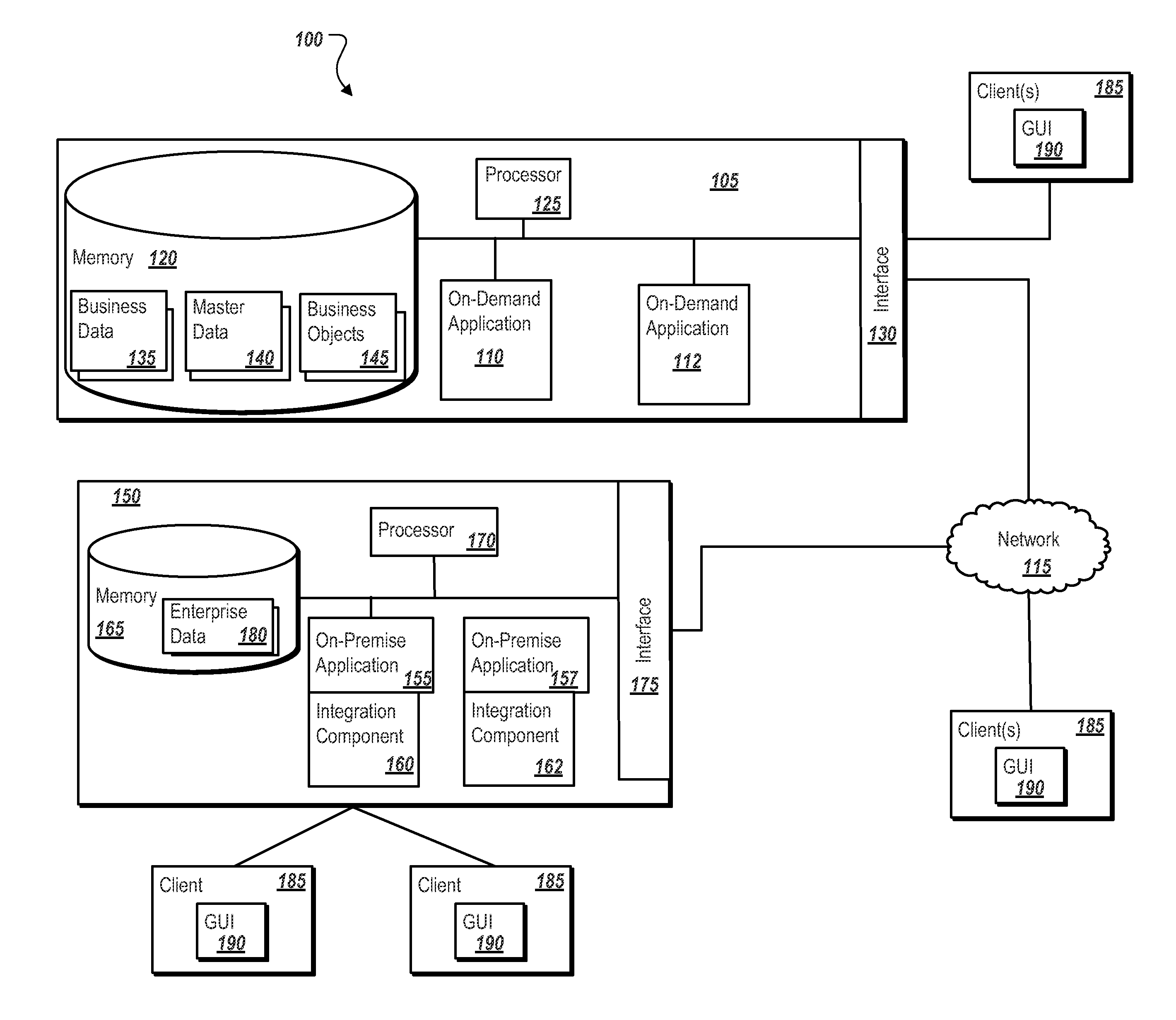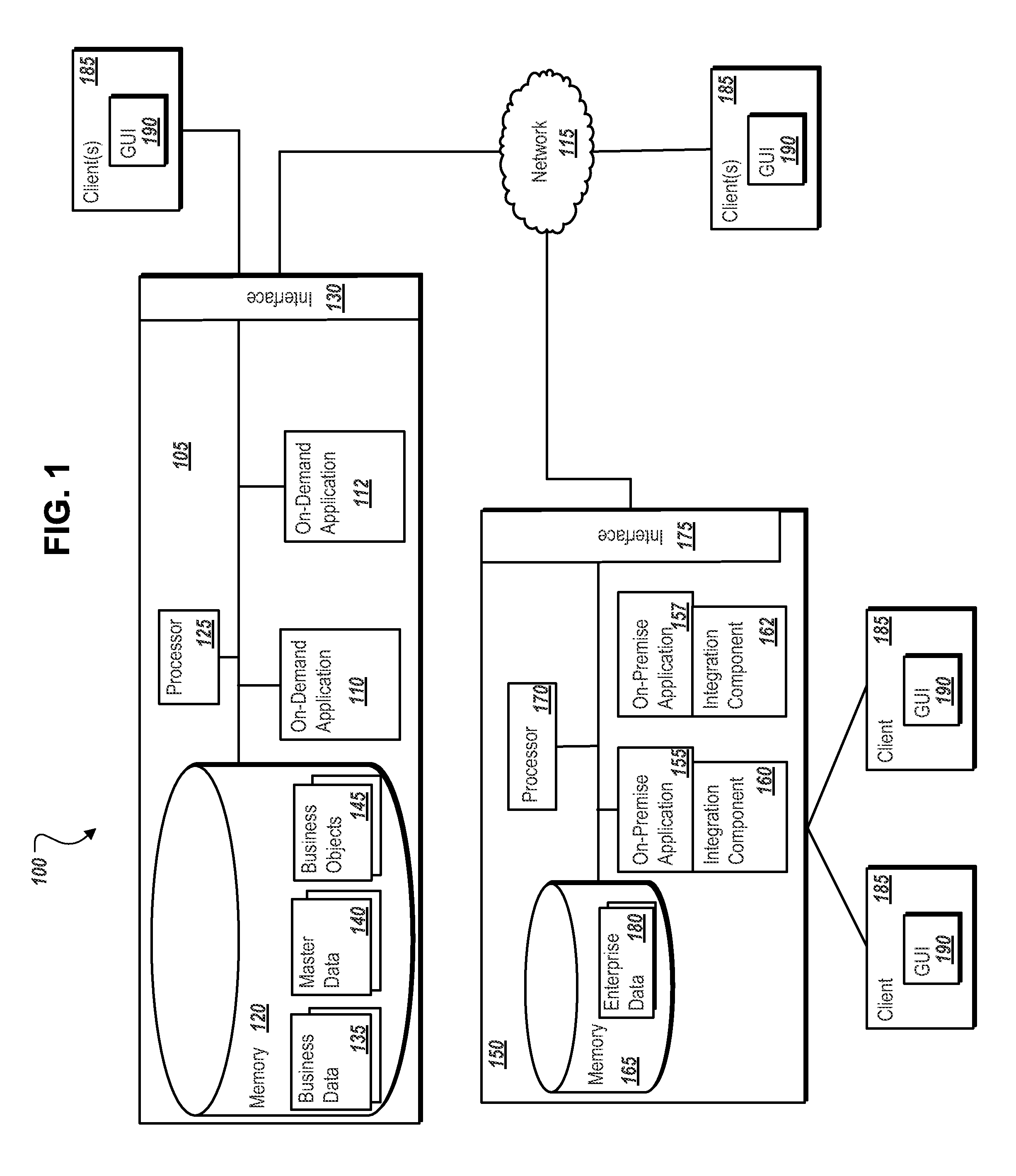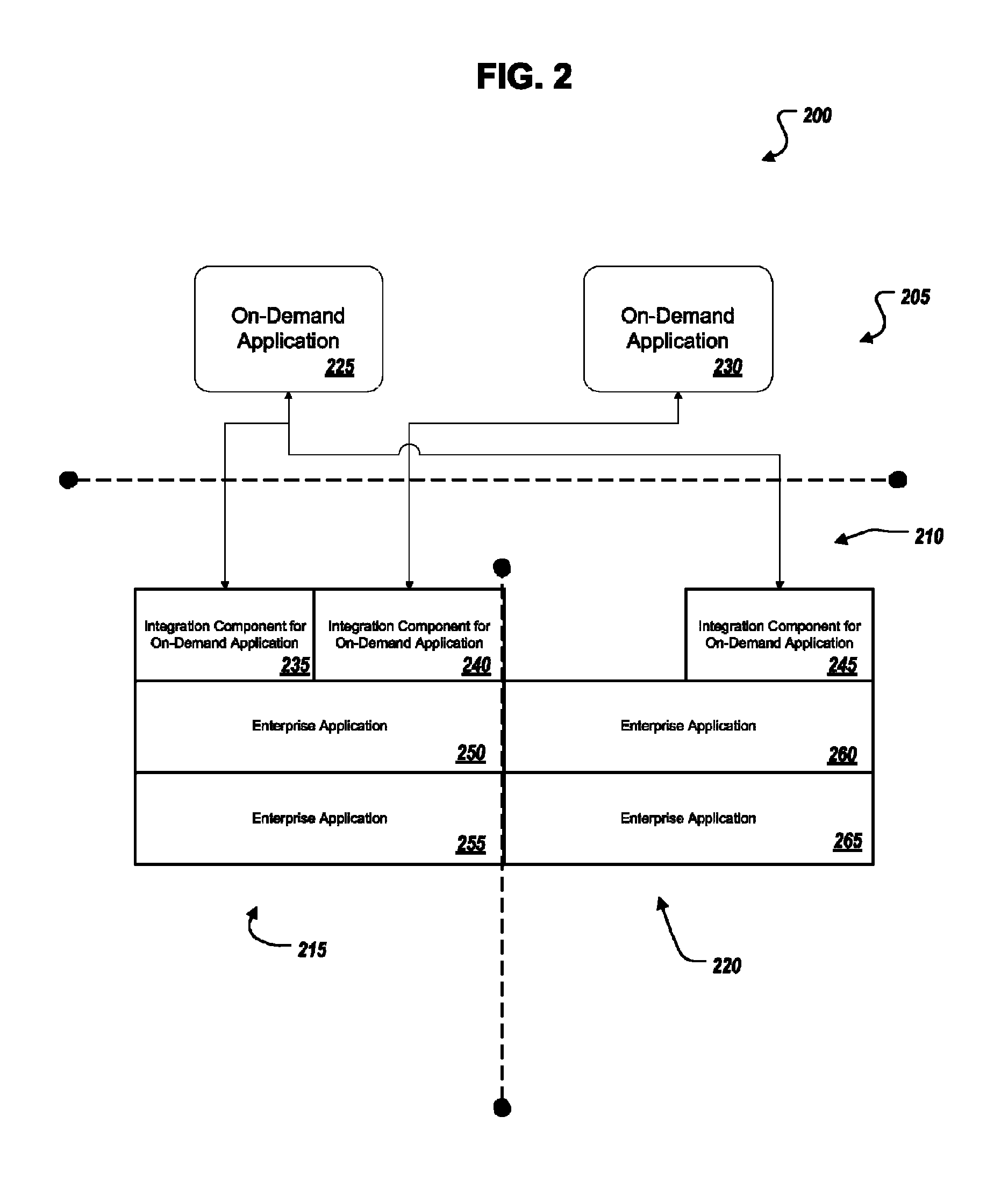Integrating software applications
a software application and software technology, applied in the field of integration software applications, can solve problems such as the conversion of on-demand applications, and achieve the effects of low entry-barrier, low bandwidth use, and agile on-demand timelines
- Summary
- Abstract
- Description
- Claims
- Application Information
AI Technical Summary
Benefits of technology
Problems solved by technology
Method used
Image
Examples
Embodiment Construction
[0030]FIG. 1 illustrates an example distributed computing system 100 including one or more on-demand applications 110, 112 executing in a hosted computing environment 105 and one or more on-premise applications 155, 157 executing in an enterprise computing environment 150. As illustrated, each of the on-premise applications 155, 157 include an integration component. On-premise application 155 includes integration component 160 while on-premise application 157 includes integration component 162. Generally, the distributed computing system 100 operates so that information, such as business information, data, applications, functionality and otherwise, are presented to one or more users of the enterprise computing environment 150 over a network 115 communicably coupling the environments 105 and 150. Such exposed business information, data, applications, and functionality may be presented to the users from the on-demand applications 110, 112 and through the on-premise applications 155, 1...
PUM
 Login to View More
Login to View More Abstract
Description
Claims
Application Information
 Login to View More
Login to View More - R&D
- Intellectual Property
- Life Sciences
- Materials
- Tech Scout
- Unparalleled Data Quality
- Higher Quality Content
- 60% Fewer Hallucinations
Browse by: Latest US Patents, China's latest patents, Technical Efficacy Thesaurus, Application Domain, Technology Topic, Popular Technical Reports.
© 2025 PatSnap. All rights reserved.Legal|Privacy policy|Modern Slavery Act Transparency Statement|Sitemap|About US| Contact US: help@patsnap.com



